An Interview with Sphericam Founder Jeffrey Martin About VR Imaging
![]()
We spoke with the founder of Sphericam, Jeffrey Martin, on the future of the company’s 360-degree spherical camera lineup and where virtual reality imaging may be headed in the next decade. The Sphericam 2 has already surpassed its Kickstarter funding goal of $150,000, collecting over $400,000, with two days of the campaign remaining. Dive into this interview to learn what challenges the team faced and what they have around the corner.
Where did the original inspiration for the first Sphericam device come from – what set you out on the journey?
I started a company called 360 Cities, which is a publishing and licensing platform for 360-degree photographers. I’ve always been fascinated with panoramic photos and spherical imaging, so turning those photos into a video isn’t very difficult when you are thinking about it all the time.
I soldered together some cheap analog CCTV cameras with little tiny fisheye lenses and stuck the device through the sunroof of my friend’s car; it was connected to an 8-channel DVR card which cost a couple hundred bucks and recorded crappy analog VGA video.
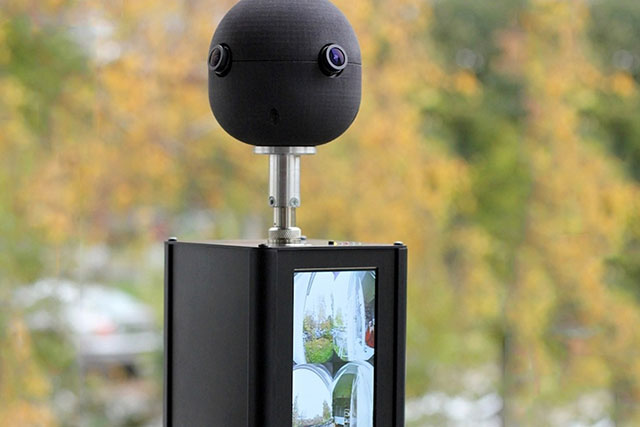
So, your beginnings were very humble?
Yeah. Cops would pull me over – “what’s that?” – and we’d tell them what it is – “Oh cool, alright!” But yeah, that’s how it started. Sphericam 1 grew directly out of it, and we were still using cheap analog cameras. Analog has certain strengths; it is a very mature technology, it is very cheap, and the sensors are incredibly sensitive. But there is a hard limit on the resolution and other stuff. I figured it out from using off-the-shelf type components, no custom electronics at all. I came up with a form factor that was generally usable to capture synchronized video and write it to a single memory card.
At the time, it was kind of unprecedented. The quality really wasn’t there for photography applications, there was no VR, there was no Oculus Rift, and no one could imagine what this was really for except for the people who backed me on kickstarted. There were a hundred backers and I learned some hard lessons about conceiving a product and then bringing it to the market. There were very hard lessons around Kickstarter and campaigns themselves – those were really valuable. To do it again, a second time, was much easier and I was well aware of the very long planning and production quality.

When we look at the new Sphericam 2, it is radically different from the first generation. Your team obviously approach this device in a different way. How did you move onto this iteration?
I found some engineers – electronic engineers – who had built cameras before and knew how to create custom printed circuit boards (PCBs) for specific applications. I sort of high level designed the product. Then my colleague hired this guy to PCB for the CPU and another guy to create the PCB for the sensor. We chose the exact sensor that we wanted; they are extremely close together. The battery is a custom shaped battery. We needed to basically find someone who could build custom electronics.
It seems that a lot of the hurdles you faced while developing were focused on designing components that could fit in the new Sphericam 2 shell. What other challenges did you face with the Sphericam 2 compared to the first generation?
The original Sphericam was a very low-resolution beta with a lot of compression. The final videos were very low quality because of the amount of compression. With the Sphericam 2, we are dealing with bits and bytes. We have a sensor that we are getting data out of, and each dot corresponds to either red or green or blue.
Then we have to use some type of algorithm, there are different ones, and you get an image that is noisy and crappy and unusable. We then subtract the dark noise and the fixed pattern noise – literally pulling raw data off of a sensor. It is not like pulling raw data off of your camera – this is literally raw data – and to do that is a lot of work.
The data that comes out of the sensor is noisy as hell and completely unusable, so to turn that into a beautiful scenic picture is a long hard road. There are a lot of dirty tricks. It is like sausage making; you don’t want to know what we are doing as long as the end result is good.
Would you say that the first iteration of Sphericam was more of an experiment to see who was interested in the technology?
Yeah, looking back on it, it was an experiment. It was a proof of concept that Kickstarter allowed me to bring to market in a very limited way. And to prove to myself, and the world, that I am capable of conceiving and shipping a product. It is one thing to build a prototype, but to actually build a product, even if it is for fifty people, is quite a difficult thing.
The Sphericam 2 is aiming at a different audience than the first generation – you are now going for the professional shooter. Tell us about this decision.
Right, so we want to actually sell it. We want to make something that people actually want to buy. I’d love to make a camera that is $300 because we would have done like 5 million on Kickstarter – I believe that. However, it is not possible right now – to make a 4k, 60fps device, which is what you need for VR. We are basically building it as cheap as we can at our scale. If we are building hundreds or thousands, then the price can come down a lot. There are other cameras that have been released that are $500 or $800, but there are too many compromises to be made to get to that price point.
The number one requirement was that the footage had to look good in VR. People who are doing VR production now can use it to make VR cinema, and it looks great in today’s VR headset. I don’t care what the resolution will be in two years – it could be 6k or 8k. People don’t need to concern themselves with that. Of course, you can future-proof stuff, but we don’t need to solve that right now.
It is so painful right now to just create a nice VR cinema. You don’t need stereo, you don’t need super fancy stuff, just a simple device that you push record and everything is synchronized properly and is the right resolution – that’s all. Then in the next model, we will fix other things too but in the beginning we just want to fix the worst pin-points.
When you have a project such as this, you have a list of goals and you have a price that you are trying to keep below. Was there anything that you left out that you weren’t able to include – maybe something wasn’t ready or was just too expensive?
A lot of people have asked for USB-C. We only have so many connections on what we have designed. USB-C is very new and to implement it requires some fairly unique expertise that really isn’t out in the wild yet. That is something that would have been really great, but it would have been too hard. We have made enough promises, and I hope we can surprise everyone with USB-C, but that would be difficult. We are going to do our best.
We would have liked to have LEDs on the Sphericam 2 so that it could shine in the dark, but again this is an additional complication; there is more heat, there is more battery – we need to start as simple as possible.
We noticed that you guys noted on your Kickstarter that your product is manufactured in Europe. Did you want to talk about that?
Yes, I have no problem with China. Everything that I have got is made in china, just like you. But a lot of people said to me that unless you are willing to move to China – do not make it in China. You will loose. Simple fact. Keep a very close eye on the production. If you are new to the field of hardware manufacturing and you don’t have a partner there that you have known for a long time, there are so many different ways it can get screwed up. It is not worth however much cheaper it is to build.
The only thing that you need to do is ship something that works. Don’t try to save money. Just build it in a way that you are sure it will work. There are lots of electronics contract manufacturers all over the world. A lot of them have factories in Asia, and Europe, and North America. The cost might be higher, but especially for a device like this where the margin is a bit bigger and the precision is much more critical, there are plenty of electronics still being made in Europe.
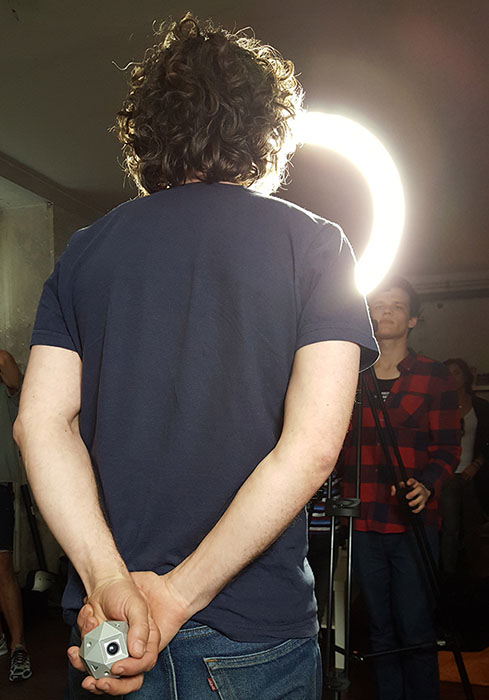
We are currently at a point right now where we are on the verge of virtual reality. If VR doesn’t pan out to be what we thought it would be, do you have any applications that you see Sphericam still being used?
Yea, you are defiantly right. A lot of the VR maniacs are sure that there is going to be one in every home in eighteen months. It would be great, but other people aren’t sure. Maybe it will be five years or ten years – no one really knows.
When you get a big investor, they expect a large amount of return in a certain amount of time. Other markets out there include teleconferencing: being able to have a camera like this in a board room table. You don’t’ necessarily need a spherical view, but as long as you can get everyone’s face and put them all together, like CNN or something like that. There are also industrial applications like telepresence for hazardous excavations and stuff: being able to mount something on some type of machine that can then be operated remotely.
It seems like the investment is in virtual reality, but the technology can pan out if needed as a safety.
Yeah, there are also lots of applications in security and military and all that evil stuff.
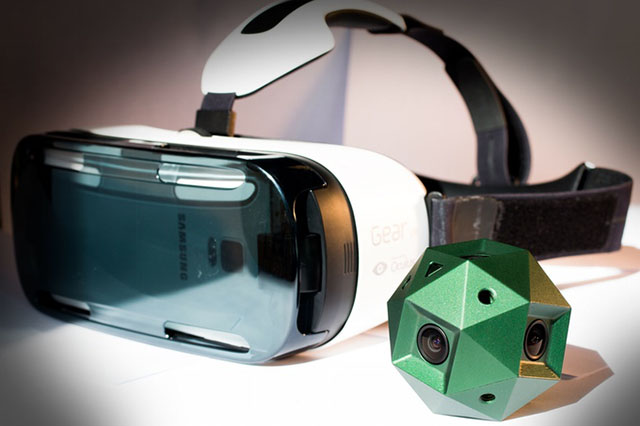
What other hurdles do we have for virtual reality recording systems that we have to continue researching and working to fix? I know your team has worked on correcting parallax issues with the Sphericam 2.
I think the biggest one is depth and head tracking so that you can move your head and the picture moves; this is not possible with any camera system today. Though this will be possible when light field technology can be used for spherical capture, and I think that is at least 5 years away.
We have a lot of people who are skeptical about light field technology; they don’t see how it could be practical. Could you explain a bit about how it could be used with the Sphericam system?
When the resolution issues are solved because you need a 10x higher resolution from the sensor, it is a much more natural image that contains depth, and you can change it after the fact. I don’t know, it is still so obscure and barely even exists – there is almost no one using it right now. But maybe in VR it will be much more relevant because you can make a photo with the ILLUM and look at it with VR glasses on and it has some 3D when you move your head. When the type of display is compatible or able to bring out the qualities of this type of image, then it makes more sense. If you don’t have the display and just a laptop display, you can click to change the focus, but I think that is just a gimmick.
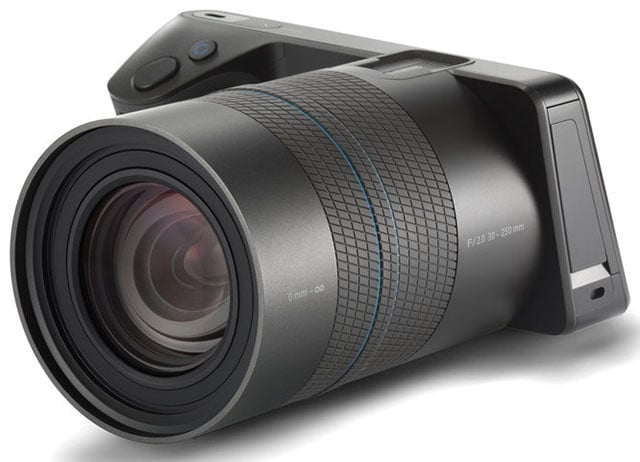
So you see a prospect in the raw depth data?
Definitely. To achieve proper stereoscopic 3D you need to calculate a depth map and light field technology is supposed to be the best way for that to happen.
I know it is early at this time, you aren’t even done with the Sphericam 2 Kickstarter, but do you have any plans for the next model?
Oh, yeah!
You are a designer, so you are always thinking. What is around the corner – do you have any fresh ideas?
Oh, yeah!
No sharing right now? Any visions of the future?
It depends. There are a couple of directions we can go from here. We started in the middle at the prosumer thing. It’s not a $10k camera and if we were building a $10k camera you could get a lot of freedom. We could use a lot of expensive sensors, but it would be for a very small audience.
It also isn’t a $500 camera where you have to build it to a certain scale, potentially something that is even smaller – something really tiny. It depends on what happens with the market and what our users are saying. Also, as we get more investments what direction makes the most sense. I definitely spec’d out a few different devices that I would love to build that range in the entire spectrum.
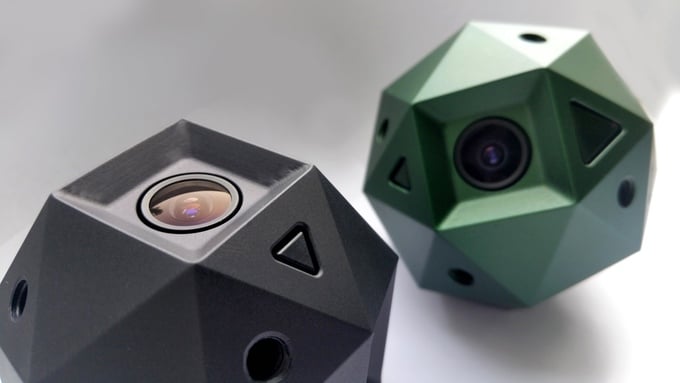
So maybe we will see a Sphericam lineup in the future instead of just a single device?
Yeah.
Last question that we just have to ask. Who’s idea was it to create the gold-plated Sphericam 2? We couldn’t help but to notice the mighty $10,000 gold 360-degree 4k camera.
Yeah, I removed the titanium one because if we sold only one titanium unit we could be in really big trouble cause it would cause $5000 just to make the housing itself, but the gold plated one is still there. Some people were actually offended by it.
Really? That’s interesting.
Yeah, dude. Some people, whom we have yet to find, are happy to have that little bit of extra luxury and also to help us out with development because it obviously doesn’t cost us $10k to gold plate a Sphericam – it is not solid gold. But it was my friend who was helping me with some of the machinings. So I did some research to find out if we could gold plate aluminum and yes you can. You have to plate it in nickel first then you have to gold plate that, so it is not a very easy process but it is not a big deal either.
Well, I hope in the next 48 hours, before the Kickstarter ends, you find someone who has a love for the gold Sphericam 2. Thank you again for taking your time to speak with us, we appreciate it.
Great, thanks. Bye!